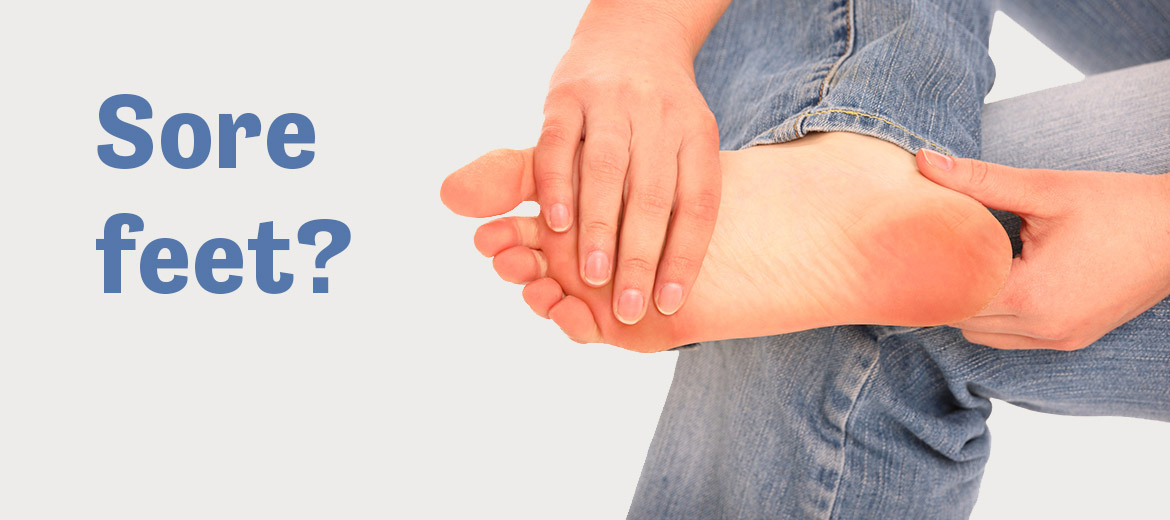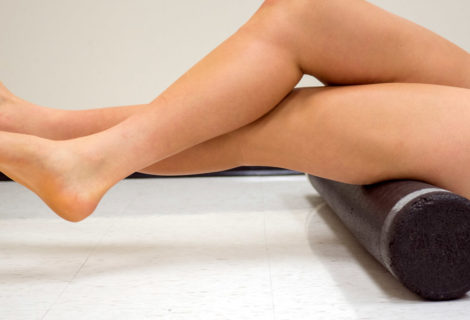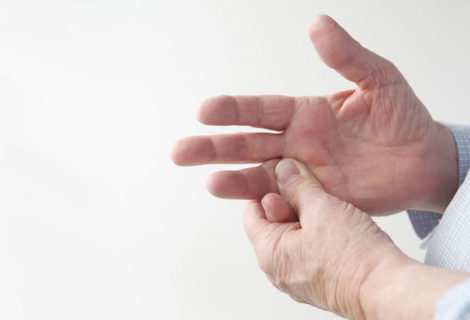Do you suffer with sore feet? You may have plantar fasciitis.
Everyone has experienced sore feet at one point or another – whether it’s from a stubbed toe, running a marathon, or spending all night in an uncomfortable pair of heels…
But has your foot pain continued?
- Are you experiencing sharp pain under the arch of your foot?
- Do your heel feels bruised all the time?
- Do you sometimes you get a burning sensation or stiffness in your foot?
- Do you have pain in your heel – especially upon walking and weight bearing on your foot?
This may make it difficult for you to get around when you first get up in the morning.
Plantar fasciitis (pronounced ‘fash-e-eye-tis’) is the most common cause of heel pain. The plantar fascia is a thick connective tissue that runs from the heel of foot to your toes. This tissue has an important function in the arch of your foot; it acts as a ‘shock absorber’. It functions as a bridge to provide tension and support through the arch of your foot. It provides support both when you’re standing – ‘static’ support, and when you’re active – ‘dynamic’ support. This specialised tissue has a very important job to do and when it can’t do its job properly, it results in foot or heel pain.
Heel pain associated with plantar fasciitis is caused by degenerative irritation at the insertion point of the plantar fascia at the heel. This degenerative condition occurs when there has been repetitive micro-trauma, and is not always associated with inflammation. Occasionally it is associated with heel spurs. This condition has also been referred to as ‘joggers heel’ and ‘policeman’s heel’.
The most common cause of micro-trauma is poor foot biomechanics, which means that your foot is no longer moving or working well, which creates extra stress and over use of your plantar fascia. Poor foot biomechanics can go unnoticed without symptoms for some time. Some of the things that might aggravate your foot include:
- Wearing poor footwear
- Taking up running or increasing the length of training
- Wearing heels
- Standing for prolonged periods especially on hard surfaces eg concrete
- Flat feet – ‘pes planus’
- Poorly fitted orthotics
Treatment for plantar fasciitis by an osteopath involves improving the movement in your foot, your arch and your ankle but also your knee, hip, pelvis and lower back. This helps to reduce the tension on the fascia and surrounding foot muscles/tissues.
Our osteopaths have also been trained to assess and fit Prokinetics which naturally activate and balance the tension in the muscles of the foot and leg which in turn has a positive mechanical influence on the rest of the body.
If you may be experiencing any of these symptoms described above, please call to make an appointment with one of our friendly osteopaths today.
Written by Dr Belinda Coulton and Dr Laura Foat.











